Guitar modes lesson 3: It has the sound of thrash metal at its core, but also Latin and flamenco music too – here’s how the Phrygian mode works
Metallica and Al Di Meola favour this mode for colourful riffs and solos. In the third lesson in our series on modes Stuart Ryan explores the sounds of the Phrygian mode

The exotic sounding Phrygian mode is employed by everyone from Latin rockers to classic metallers like Black Sabbath and Metallica. It's also a go-to for guitarists faking their way through a traditional Spanish flamenco guitar sound!
The Phrygian mode is perfect for creating tension on static minor chords. For example, a typical thrash metal-style trick sees one guitar chopping away on a root powerchord as a second guitar riffs around the colourful minor intervals. Instant metal!
The mode's trademark tense sound comes primarily from its minor 2nd scale degree, and, to a lesser extent, its minor 3rd and minor 6th. Here's a rundown of the intervals:
Root, minor 2nd, minor 3rd, perfect 4th, perfect 5th, minor 6th, minor 7th
Our Phrygian lesson is in A, so here are the notes of the mode to get you started:
A Bb C D E F G
The V chord has a strong effect in any diatonic scale (we'll save the theoretical explanation for another day – just take our word for it for now!) and in the A Phrygian mode that V chord is the tense-sounding Em7b5 chord.
This combination of a dissonant minor 2nd interval and a tense V chord are key to the Phrygian mode's signature sound.
We explain all this and more in our video lesson, plus scroll down to find all of our examples tabbed out in full.
A Phrygian mode (5th position)
This two octave shape is a great starting point for getting familiar with the Phrygian mode. As you play through, listen for the notes that give the mode its character and pause on them to really hear their effect relative to the other notes.
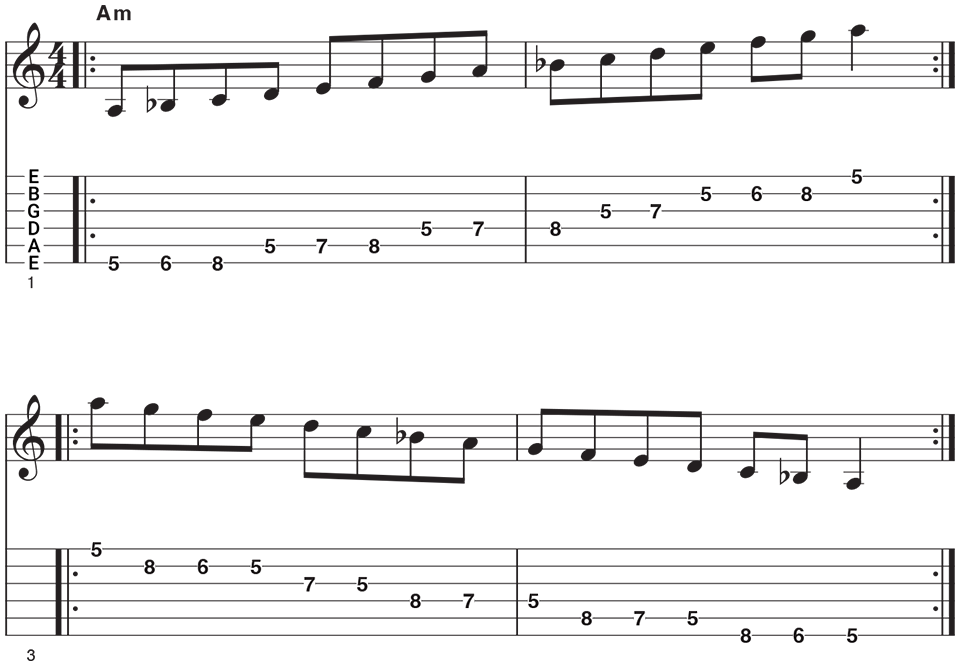
A Phrygian mode (pedal exercise)
Playing the mode against a pedal tone, in this case the open fifth string, is a fantastic way to hear the character of the mode against its root note. This gets you acquainted with the harmony of each note against the root. Listen out for the minor 2nd at the 1st fret of the fifth string.
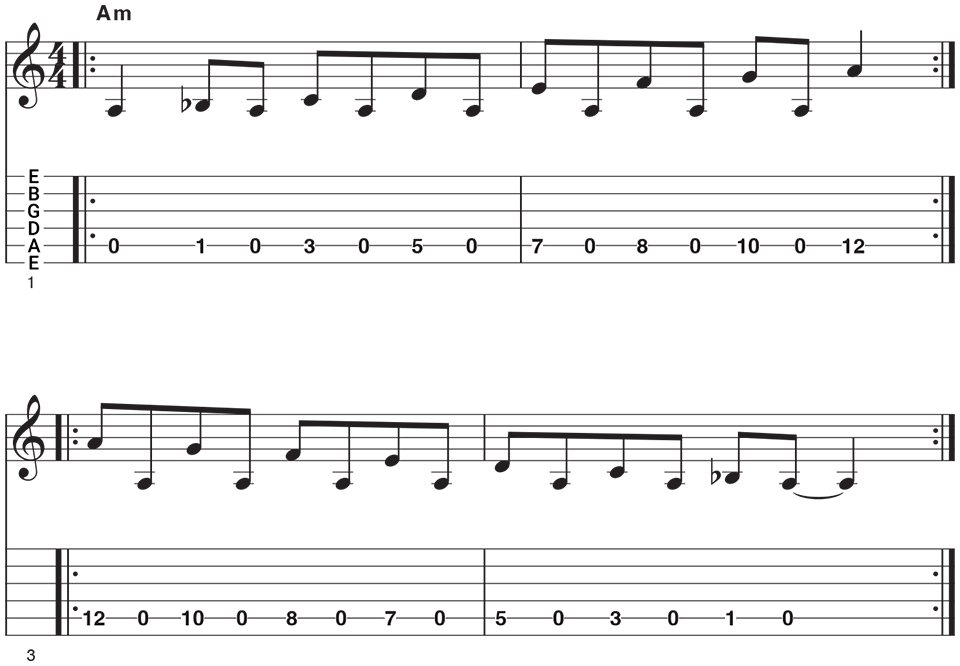
A Phrygian mode (diads)
Harmonizing the mode in 3rd diads as we've done here reveals the textures that exist within it. Once you’ve practiced playing the harmonized mode up and down the first and second strings try working out the shapes on the other string pairs.

A Phrygian mode (triads)
Here we're playing the triad chords of A Phrygian. Playing a mode like this starts to give you the bigger picture of how it all sounds and what you can ultimately do with it. Why not try experimenting with the chords in your own progression?

A Phrygian mode (7th chords)
The harmony opens up here as we harmonize the mode in 7th chords. Pay particular attention to the relationship between the i chord (Am7) and the II (Bbmaj7) as this is where the core character of the mode comes from.

A Phrygian mode (riff)
The interplay between the i m7 chord and the V m7b5 chord are great for creating Latin style rock parts. Build in some simple riffs that emphasise the minor 2nd from within the scale and you can hear that tense Latin sound come alive.
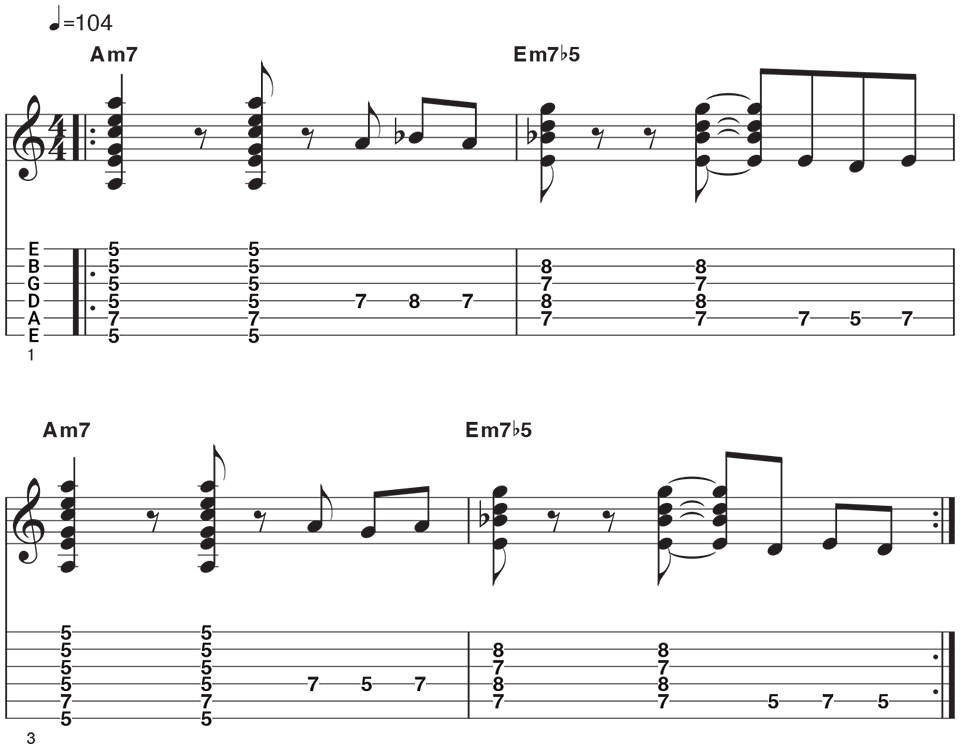
A Phrygian mode (rhythm guitar riff)
Here’s another minor Latin style progression using Am7, Bmaj7 and Gm7 chords within the Phrygian mode. The muted strings imitate the sound of the guiro within the backing track. To play these, simply take the pressure off your fretting hand fingers and strike the muted strings.
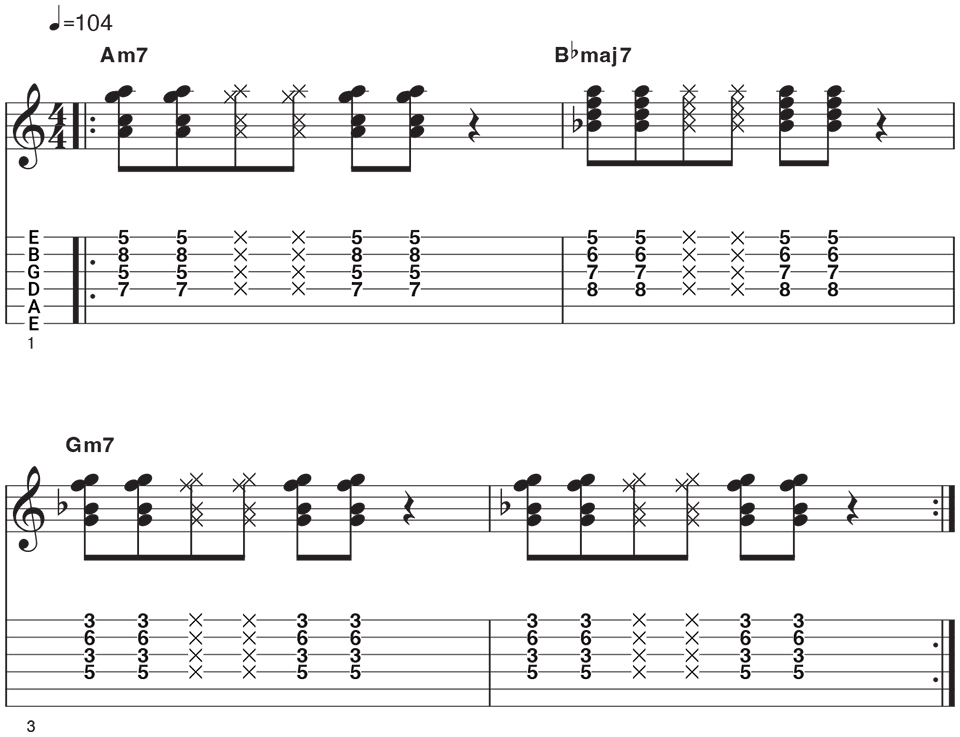
A Phrygian mode (lead guitar lick)
We'll wrap up our Phrygian journey with this lead guitar lick. In general, when soloing with the Phrygian mode it’s a good idea to target the character notes of the mode over their respective chords. Here, aim to hit a Bb (the flattened 2nd) over the Am7 chord to really bring out the character of this mode.
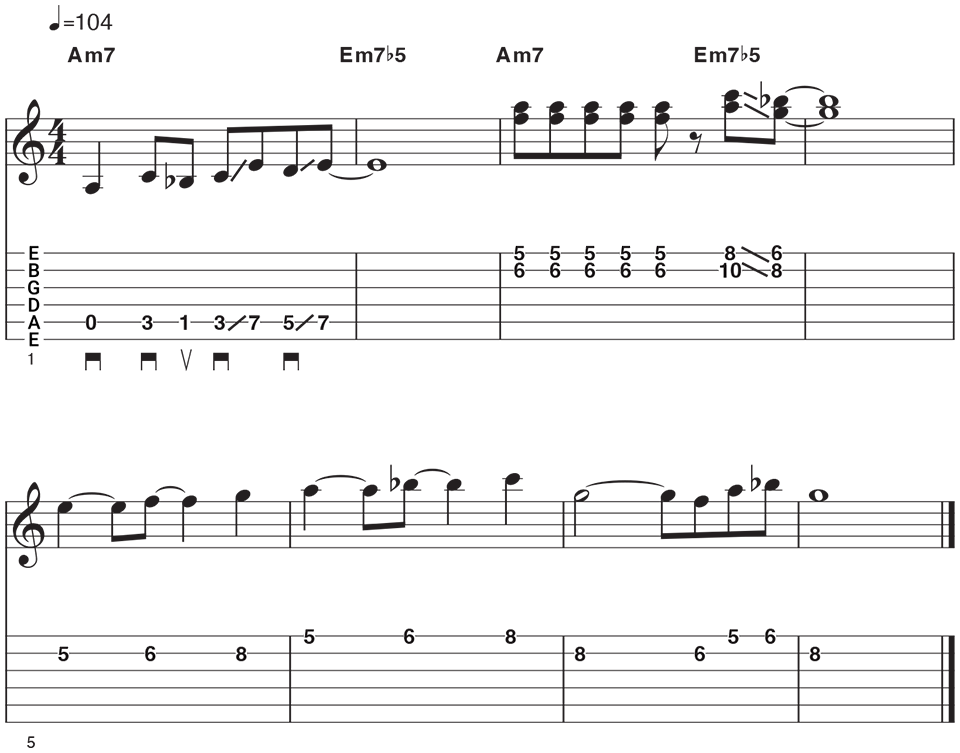
Get The Pick Newsletter
All the latest guitar news, interviews, lessons, reviews, deals and more, direct to your inbox!
Stuart Ryan is best known for his acoustic guitar playing, from Celtic fingerpicking and traditional folk to modern percussive phrasing and fresh interpretations of popular pieces. He has released several solo albums, written pieces for UK examination boards and created nine tutorial books ranging from acoustic guitar arrangements to Americana styles.










